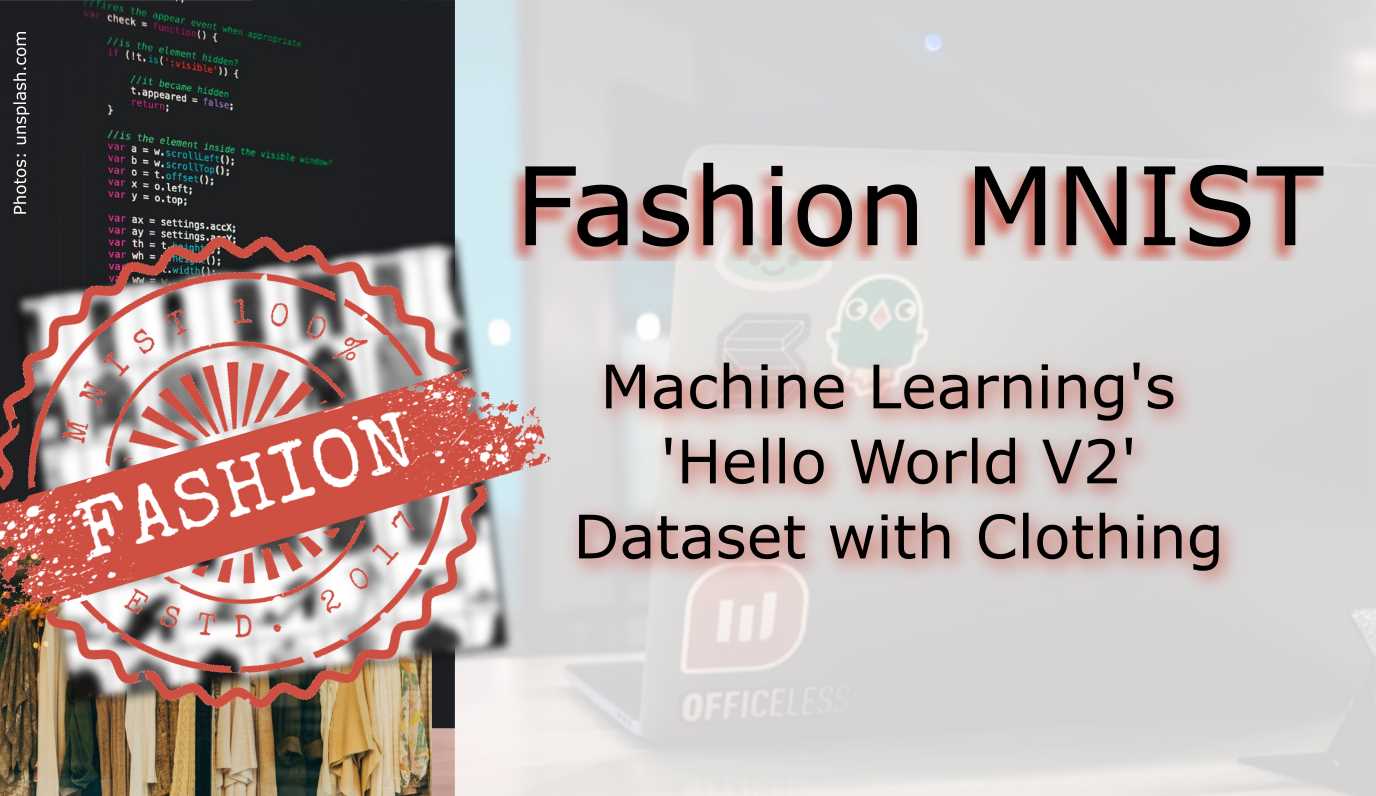Fashion MNIST

Machine Learning’s ‘Hello World V2’ Dataset with Clothing.
Introduction
In 2017, Zalando Research published a dataset, which is very similar to the well known “Hello World” of Computer Vision: the MNIST database of handwritten digits. The dataset is designed for machine learning classification tasks and contains in total 60,000 training and 10,000 test images (gray scale) with each 28x28 pixel. Each training and test case is associated with one of ten labels (0–9). Up till here Zalando’s dataset is basically the same as the original handwritten digits data. However, instead of having images of the digits 0–9, Zalando’s data contains (not unsurprisingly) images with 10 different fashion products. Consequently, the dataset is called Fashion-MNIST dataset, which can be downloaded from GitHub or Kaggle. A few examples are shown in the following image, where each row contains one fashion item.

The 10 different class labels are:
- T-shirt/top
- Trouser
- Pullover
- Dress
- Coat
- Sandal
- Shirt
- Sneaker
- Bag
- Ankle Boot
According to the authors, the Fashion-MNIST data is intended to be a direct drop-in replacement for the old MNIST handwritten digits data, since there were several issues with the handwritten digits. For example, it was possible to correctly distinguish between several digits, by simply looking at a few pixels. Even with linear classifiers it was possible to achieve high classification accuracy. The Fashion-MNIST data promises to be more diverse so that machine learning (ML) algorithms have to learn more advanced features in order to be able to separate the individual classes reliably.
Hands-On
Since the structure of the files in the Fashion-MNIST data is the same as for the old MNIST data, it is easy to load the new data with the older code. Using R, the following functions should do the job and load the training and test cases including class labels into the global environment. The code was provided by <href=”https://gist.github.com/brendano/39760” target=”_blank”>Brendan O’Connor</a>:
load_mnist <- function() {
load_image_file <- function(filename) {
ret = list()
f = file(filename,'rb')
readBin(f,'integer',n=1,size=4,endian='big')
ret$n = readBin(f,'integer',n=1,size=4,endian='big')
nrow = readBin(f,'integer',n=1,size=4,endian='big')
ncol = readBin(f,'integer',n=1,size=4,endian='big')
x = readBin(f,'integer',n=ret$n*nrow*ncol,size=1,signed=F)
ret$x = matrix(x, ncol=nrow*ncol, byrow=T)
close(f)
ret
}
load_label_file <- function(filename) {
f = file(filename,'rb')
readBin(f,'integer',n=1,size=4,endian='big')
n = readBin(f,'integer',n=1,size=4,endian='big')
y = readBin(f,'integer',n=n,size=1,signed=F)
close(f)
y
}
train <<- load_image_file('train-images-idx3-ubyte')
test <<- load_image_file('t10k-images-idx3-ubyte')
train$y <<- load_label_file('train-labels-idx1-ubyte')
test$y <<- load_label_file('t10k-labels-idx1-ubyte')
}
show_digit <- function(arr784, col=gray(12:1/12), ...) {
image(matrix(arr784, nrow=28)[,28:1], col=col, ...)
}
Additionally, I added a function (quick & dirty code) to visualize a sample of training images. The function basically samples the training data and shows random images in a squared grid. If desired, the images are arranged in a way that each row contains only samples from one class:
library(reshape2)
library(ggplot2)
showExamples <- function(nExamplesClass = 10, randomize = F) {
classes <- sort(unique(train$y)) # a vector of all classes
nClasses <- length(classes) # Number of classes
iExamples <- as.matrix(sapply(classes,
function(i) {
iLab <- which(train$y == i)
sample(x = iLab, size = nExamplesClass, replace = F)
}))
if(randomize) {
iExamples <- matrix(sample(x = iExamples, size = length(iExamples), replace = F),
nrow = dim(iExamples)[1])
}
data <- array(train$x[iExamples, ], dim = c(nExamplesClass * nClasses, 28, 28))
plotData <- melt(data, varnames = c("image", "x", "y"), value.name = "pixel")
nrows <- if(randomize) round(sqrt(nExamplesClass * nClasses)) else 10
p <- ggplot(plotData, aes(x = x, y = y, fill = pixel)) +
geom_tile() +
scale_y_reverse() +
facet_wrap(~ image, nrow = nrows) +
theme_bw()+
theme(
panel.spacing = unit(0, "lines"),
axis.text = element_blank(),
axis.ticks = element_blank(),
strip.background = element_blank(),
strip.text.x = element_blank(),
panel.grid.major = element_blank(),
panel.grid.minor = element_blank(),
legend.position = "none",
axis.title.x = element_blank(),
axis.text.x = element_blank(),
axis.ticks.x = element_blank(),
axis.title.y = element_blank(),
axis.text.y = element_blank(),
axis.ticks.y = element_blank()
) + scale_fill_gradient(low = "black", high = "white")
plot(p)
}
For example, with showExamples(20, T) we can plot a 20x20 matrix with 400 random images:

Overall, the Fashion-MNIST dataset is an interesting test-bed for beginners in machine learning to apply different already existing algorithms. More advanced data scientists could use this data for a fast first evaluation of new approaches. However, this dataset is too simple to deliver reliable/comparable performance measures for new machine learning algorithms. Although I did not test it yet myself, I expect that simple convolutional neural networks would achieve an accuracy of around 90% on the Fashion-MNIST test data. More advanced neural networks can probably achieve an accuracy higher than 95%. For comparison, according to Zalando Research, the human performance is about 84%.
Can you recognize some fashion items in the following matrix (although they are that tiny)? Our poor ML algorithms sometimes have to do this millions of times per day.
